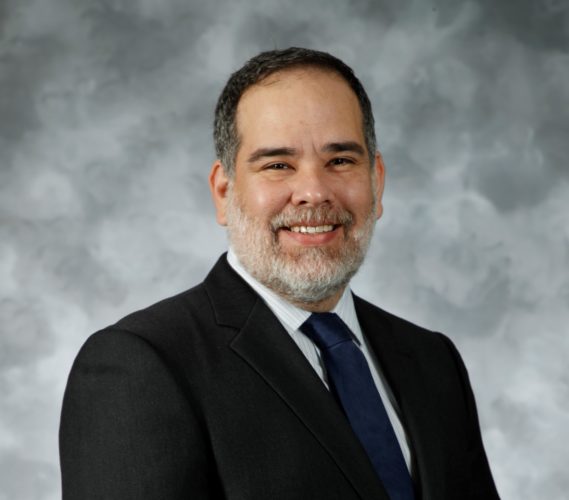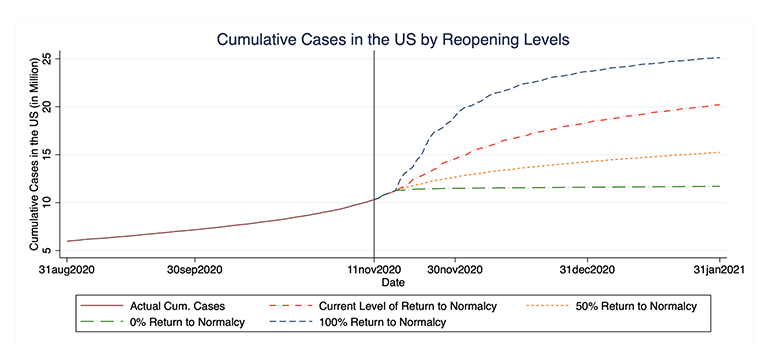The COVID-19 pandemic exposed and exacerbated vast inequalities in the U.S. Lower-income families experienced greater health risks, more job loss and economic insecurity, and greater declines in psychological well-being—the effects of which will be felt for years to come.
For many Americans, the pandemic represented the first time they had been confronted with these stark inequalities. Indeed, for the first time, many were stripped of their own individual choice and sense of control. New research from Olin Business School suggests that this experience may have led some to better understand the structural sources of inequality and, in turn, support efforts to create a more equal society.

“In the U.S., people tend to think about wealth and inequality as a result of individual differences such as merit or hard work. We were interested in uncovering whether gaining firsthand experience with an external and uncontrollable factor—the COVID-19 pandemic—could shift Americans’ attitudes. We wanted to know: Would people see inequality as more due to structural factors?” said Hannah J. Birnbaum, assistant professor of organizational behavior at Olin.
In the study “Personal harm from the COVID-19 pandemic predicts advocacy for equality,” forthcoming in the Journal of Experimental Social Psychology, Birnbaum and colleagues found evidence that individuals who experienced personal harm—either by contracting COVID-19, losing a job or experiencing psychological distress—were more likely to support and advocate for equality up to a full year after the experience.
Birnbaum’s coauthors include Rebecca M. Carey of Princeton University; Andrea G. Dittmann of Emory University’s Goizueta Business School; Hazel Rose Markus and Ellen C. Reinhart of Stanford University; and Nicole M. Stephens of Northwestern University’s Kellogg School of Management.
New, firsthand experience key to change
The findings were collected from a three-wave longitudinal survey beginning in May 2020. Follow-up surveys were administered in October 2020 and May 2021. The three surveys were part of a larger study of the effects of the COVID-19 pandemic over time. Nearly 700 U.S. adults completed all three surveys.
‘Our research suggests that perhaps the same people who were touched by the sometimes devastating effects of the pandemic will also be the ones who will advocate for greater equality in the United States.’
Hannah J. Birnbaum
The findings showed that those who had been personally harmed at the start of the pandemic were more likely to appreciate how structural factors outside of individuals’ control—i.e., bad luck and discrimination—contribute to inequality. This more structural understanding of inequality also led these individuals to be more likely to advocate for equality one year later. For example, they were more likely to support redistribution policies such as universal health care as well as to engage in behaviors such as contacting a public official to express support for reducing inequality.
Merely observing the pandemic from afar did not have the same impact. In the study, nearly 30% of respondents at the start of the pandemic did not report any type of personal harm. One year later, they also did not report an increase in advocacy for equality.
“This discovery was important because it explains why other large-scale negative events—like natural disasters—may not influence people’s attitudes or produce broad cultural change if they feel personally unaffected by them,” Birnbaum said.
Birnbaum and her colleagues said the results help reconcile previous disparate findings on whether those who experience adversity will be more or less likely to advocate for greater equality.
“On the one hand, previous research suggests that lower-power groups should be more likely to advocate for inequality than higher-power groups because they are exposed to more chronic harm and therefore are especially likely to endorse external attributions,” the authors write. “On the other hand, previous research has also found that lower- (vs. higher-) power groups are often motivated to justify and maintain the current system (e.g., to reduce uncertainty and threat), rather than advocating for greater equality.”
“Our research shows that when people experienced a new physical, economic or social harm brought on by the pandemic firsthand, they no longer tried to justify the experience as fair and legitimate,” Birnbaum said. “Unlike longterm situations like poverty or discrimination, it was harder for people to blame harm caused by the pandemic on personal choices.”
The research also shows that personal harm affects people’s attitudes and behavior long after the initial experience. This means that the experiences of harm during the pandemic may have long-lasting impacts on people’s attitudes toward inequality.
“Just like the Great Depression defined our grandparents’ generation, the COVID-19 pandemic will have a lasting impact on ours,” Birnbaum said.
“For those who hope to increase equality in the United States, our research suggests there may be a possible silver lining of the COVID-19 pandemic. Our research suggests that perhaps the same people who were touched by the sometimes devastating effects of the pandemic will also be the ones who will advocate for greater equality in the United States.”













